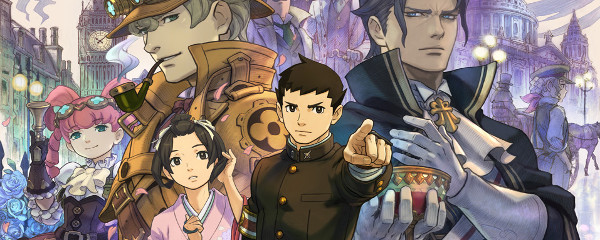Note: this article was written on May 3rd. There’s a chance that some of the information might be outdated regarding the fan translation group Scarlet Study. However, this should not affect the content of the article itself.
Also, a huge shoutout to Tyr for working tirelessly on the new website design and making everything look nice, as well as his countless suggestions to improve my work. I’d also like to thank Zander for giving my article a quick editing pass, that which finally forced me to finally getting around to publish it. Although I call it an impressions article, it grew wild beyond my expectations. With that out of the way, please do enjoy reading my review.
While Capcom was busy re-releasing the initial Ace Attorney (AA) trilogy for the nth time, the fans delivered: nearly four years after its release in Japan, Dai Gyakuten Saiban or “Great Ace Attorney” has been fully translated as of April 30th. Being a die-hard fan of the AA series and having played all nine other games available in English, I couldn’t wait to get my hands on it.
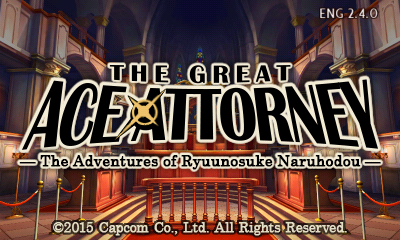
Great Ace Attorney (GAA) is the first game of an AA franchise spin-off series, set in the Meiji Period, right before the turn of the century. The Protagonist, Naruhodou Ryousuke, is supposedly an ancestor of Naruhodou Ryuuichi, also known as Phoenix Wright. Adding on to the fact that most of the player’s time is spent in the British Empire, this makes for a one of a kind setting, and a very unique gaming experience.
My plan with this review was to give the readers an idea of my overall impressions of the game, and thus I shall comment on the gameplay and other aspects case by case. I will do my best to keep spoilers to a minimum, so that even those who have yet to play this game can read it.
Case 1 – The Adventure of the Great Departure
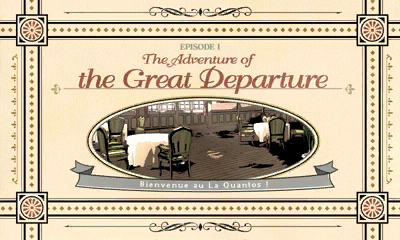
The first case introduces the setting and the protagonist. Naruhodou’s best friend and fellow university student, Asougi Kazuma, is selected for a foreign exchange program to the British Empire. However, when Naruhodou is falsely accused of a crime, Asougi vows to do nothing but prove his friend’s innocence in court. This will be the only trial in Japan.
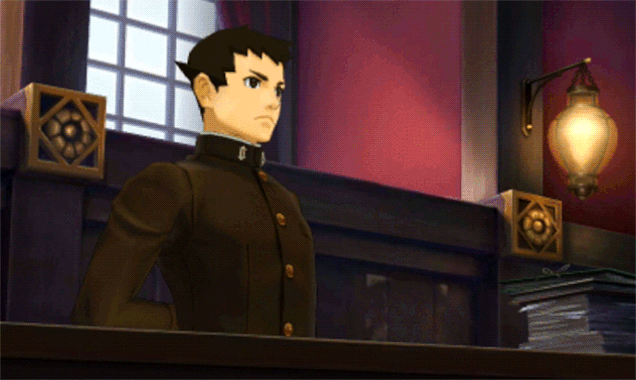
This is the tutorial case and is basic enough to get by, as the game pretty much holds your hand through whole trial. This is the most annoying part for veterans, not only because of the simplicity of the case but because there are times you want to do something, but it’s not when the game wants you to. Still, the case has enough twists and turns to keep you interested.
There is a feature present in this game that was first introduced in the Professor Layton vs. Phoenix Wright: Ace Attorney crossover game. I’ll explain it for those who aren’t familiar with it.
More than one individual can stand on the witness stand, for up to four people later on the game. Not only can there be several characters giving testimony at once (or well, one after the other), but they can also react to another character’s testimony.
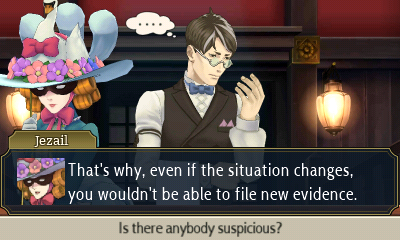
At that time, you can change your focus to them, and question them about their reaction. Honestly, it’s quite a cool way to acquire new information and it allows for different types of testimonies.

One major aspect that I’d like to point out is how discriminatory some of the British are against the Japanese. Afterall, how could a tiny island nation of the Far East begin to compare to the majesty of the Great British Empire?
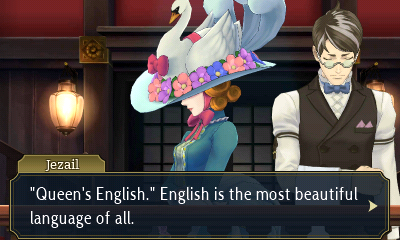
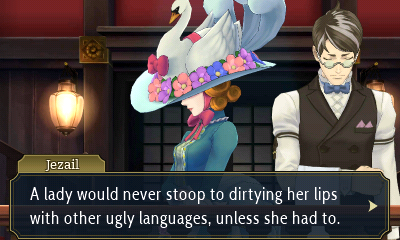
Reflective of its epoch, you can see not only how the Japanese act subservient to the British, but also how prejudiced the latter act against them. More than once did I think “Wow, that’s really racist“, but otherwise it would not be a faithful adaptation. You could even twist it around as some sort of victim complex.
The theme of trust and belief in oneself and one’s client is ever present in this case, and the whole game. This is a focal point of Naruhodou’s character development, but it’s honestly quite similar to Phoenix Wright’s evolution as a character. Sadly, the ending is quite unsatisfactory.
Case 2 – The Adventure of the Unbreakable Speckled Band

En route to the British Empire, another incident occurs. This is when we meet two of the other main characters: the legal assistant Mikotoba Susato, the very image of the ideal Japanese lady; and the Great Detective, THE Sherlock Holmes.
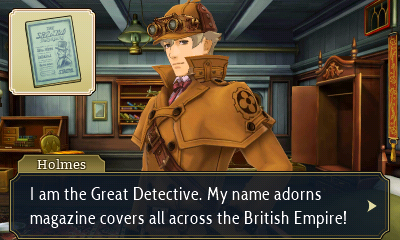
Yes, you got that right. It’s THE Sherlock Holmes from the Conan Doyle novels…or is it really? Well, this is when you can expect to be disappointed. This Sherlock Holmes acts rather goofy, is rather happy-go-lucky and completely misses the mark with his deductions.
There is no trial here, so this is a purely “Investigations” type of case. You move between areas, explore them and get to hear Sherlock Holmes’s not-so-great Great Deductions.

However, this too is a new gameplay mechanic: by changing certain keywords of Holmes’s deduction, you can eventually find out the truth. When a certain erroneous statement is made, time stops and the player can look around the room in order to find the correct keyword. It’s even possible to zoom in and change perspectives.
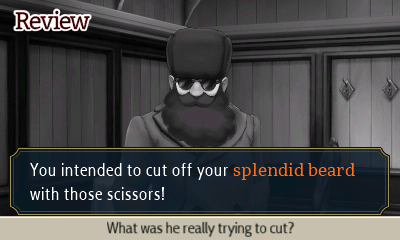
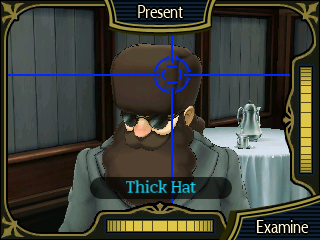
This is usually well-implemented, although to be fair, most of these are extremely easy, even later on. There is a limited number of items and the individual’s line of sight always betrays them. A bit of a pity.
This case wasn’t very interesting either. The locations you can explore are extremely limited (two rooms, one hallway) and honestly, it’s not really what I expect out of an Ace Attorney game. It could be argued that this concept is similar to AA: Investigations, but that’s completely incorrect, as that game is more centered around logic and one-on-one battles of wits. And most of important, I’m here for the trials, not the investigations. This feels more like a second tutorial case. If anything, I’d rather play as THE Sherlock Holmes or make my own deducations instead of correcting his statements…and one might say that correcting the Great Detective’s deductions is pure blasphemy, especially if you’re a fan of the novels.
In all honesty, I was disappointed with this chapter as I felt that the emotional hook completely missed its mark, mostly due to a complete lack of setup and how it’s not something entirely new in the AA series either. Really disappointing. The game also shows you something at the very beginning in order to purposely mislead you which I’d rather they had not shown at all.
Case 3 – The Adventure of the Runaway Room

We have finally arrived to the Great British Empire, and soon enough does Naruhodou have to prove his mettle in the British courts. This is a trial-only chapter, as you can investigate the crime scene during the trial itself.
A new gameplay mechanic is once again introduced: the jury. From the six million inhabitants of the Great Empire Empire, six people are chosen to compose the jury for each every trial. They have the power to cast a guilty or non-guilty verdict, and when a total of six non-guilty verdicts are cast, the trial is over.
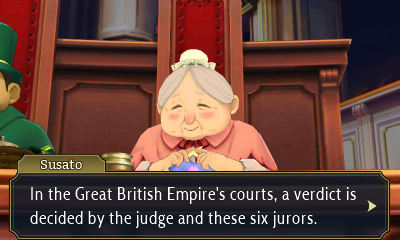
When six guilty verdicts are cast, however, the trial comes to a halt. The jurors report their judicial findings and the defense has the opportunity to present a closing argument, where the player must clash two contradictory statements in order to get the jurors to change their vote.
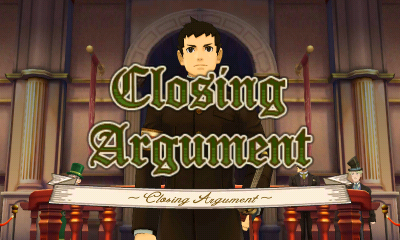
The trial will continue when at least four jurors do so. It is also possible (and necessary) to press those same statements for extra information and to find ways to get them to change their mind. Not only that, but jurors can also react to a different juror’s statement! Fun stuff.

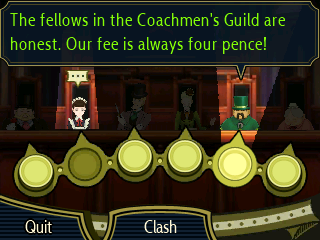
What does this mean for the player? Well, not much, really. I’m saying this because the events are scripted anyway, so it doesn’t really matter how you do things. Another critique of the juror system would that the characters aren’t exactly characters but “one or two personality traits” put together. Although, they’re interesting in the way that their different backgrounds often help new information and new possibilites come to light.
A new character is introduced: Baron zon Zieks, an intimidating prosecutor nicknamed “Grim Reaper of the Old Bailey”. It is said that not a single defendant has escaped with his life intact after being prosecuted by this man. While you have the death penalty to consider, this doesn’t mean that he wins every single case. It’s just that for some reason or another, the defendant ends up meeting a tragic end.

This character heavily resembles Mitsurugi Reiji, also known as Miles Edgeworth, but that’s as far as the similarities go. He is perhaps the most blatantly anti-Japanese character in the entire game, and honestly, it’s quite annoying to be called something along the lines of filthy jap at every turn. He looks like a badass and acts the part. However, I found that his role in the plot is relatively minor compared to prosecutors from past games.
The case is easy, save for one instance where you have to do something that is completely counter-intuitive. You have to press all statements, and after that, you have to press a specific statement and press a reaction. I’ll complain about this when I talk about something similar that happened in Case 5.
I find that the case has a very unsatisfactory ending for both the characters and the player for reasons I won’t mention, but has important character development for the protagonist. The case also criticizes the juror system, as they are nothing but common folk often moved by emotion and not logic or reason. With so many participants in the trial, you can be sure to expect lots of “theatrics”.
Case 4 – The Clouded Kokoro
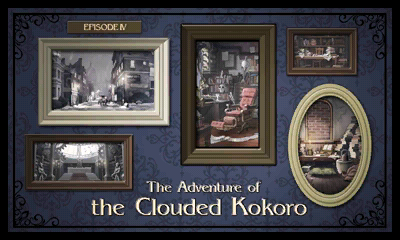
“I Am A Cat”. And he happens to be our next defendant.
Here we meet Iris Watson, the final main character. She’s a ten years old genius inventor with a PhD in Medicine and is the writer of the Sherlock Holme novels published in the Strand Magazine. Oh, and above anything else, she’s an adorable little girl! How she relates to John H. Watson, I’ll leave it for you to find out. Here she explains why Sherlock Holmes is so different from the character in the novels. They live together and have a sort of parent-child relationship, however in their case, you could say that the roles are reversed…
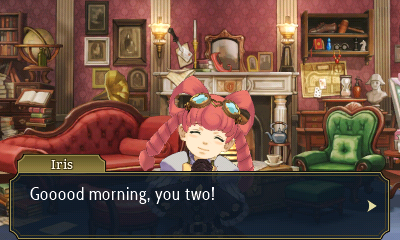
There is not much to say about this case. Naruhodou is defending a fellow Japanese kinsman, so you can be sure to expect a rough trial. This time there is both an investigation and trial portion, including a Great Deduction. It’s one of those cases where the solution is wackier than the mystery itself, so be sure to keep your wits about.
Case 5 – The Hound of the Baskervilles

The stage is set for the final case! And what a better way to start it than with…hours of set-up. Yes, that’ll be my first critique. The set-up and investigation portion of the chapter is extremely long, probably adding up to about four hours. I believe it would’ve been better if some of the character interactions were more spread out across the game.
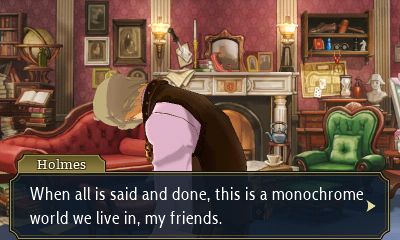
The case isn’t all too difficult, save for one instance where once again you have to do something rather counter-intuitive. You have to press a certain witness even if they don’t react. That’s right, it doesn’t matter how much evidence you throw at the statements, it won’t change a thing. I was honestly annoyed because the only times you had to press a different witness was when they showed a reaction. While I have only myself to blame for not trying out different things, every other mainline AA game has trained us to do exactly this: spot contradiction, present evidence.
This relates to what I complained about in chapter 3. A friend of mine referred to this as player conditioning. Basically, the game builds certain expectations in the player’s mind, as that was what they were presented throughout the game, or in this case, a game series. The player doesn’t bother thinking outside the expectations that the game set up, because it wasn’t necessary thus far. This is more of a fault with the game than the player, as there’s really no need to be so cryptic. Although as much as I complain about this, it only amounted to a few minutes of frustration, but just enough to disrupt the flow.
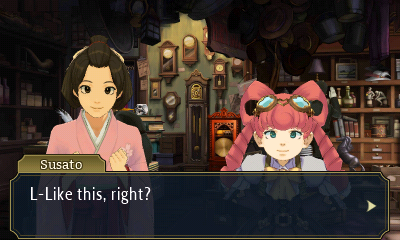
There was a certain aspect of this case that I wasn’t very fond of, but overall the trial was quite good. There’s nothing like the last case of an AA game to give your neurons a spin. Still, I do have to say that the pre-trial portion was too long for its own good.
Final thoughts
The game does not end on a cliffhanger, but there’s obvious sequel bait at the very end. In fact, it’s obvious that this game was made with a sequel in mind from the very outset, thus it’s difficult to judge it when we don’t have the whole story yet. Some characters are left completely undeveloped, with many mysteries yet to be resolved…it leaves a bit of a bitter taste in one’s mouth.
There is also less emphasis on the culprits, their motives and their wacky breakdowns, following a more traditional mystery novel experience with the focus on the “howdunnit” and “whodunnit”. It’s not that I don’t like that, but to be honest, if I wanted to read a novel, I’d do just that. I play Ace Attorney games for the unique experience they have to offer.
Honestly, what could have been a love letter to western literature ends up turning out to be quite the opposite – especially when you consider how Sherlock Holmes is portrayed as a complete goofball, and how the game dealt with the first case’s victim.
If I had to sum it up, I’d say that the game has the Ace Attorney spirit, but lacks some heart, and that the cases overall aren’t that great. However, it’s quite interesting to see how the gameplay mechanics evolved.
That being said, I do consider this to be a decent game and a fine addition to the Ace Attorney franchise at that. If I had to rate it, I would put it above AA5 and below AA6. While the setting is definitely interesting, mostly in the way technology is used, there are many recycled themes from the other games: trust in others, belief in oneself, belief in one’s client, an attorney’s path and so on. It’s not the first time we read this type of story. The criticism of the judicial system is not as subtle, but to be fair, its flaws are all the more obvious to us who live in modern times.
The art and animation are amazing, as always. With the game being rendered in Realtime 3D, you can expect the characters to jump up and down, dance around and practice their best JoJo poses.

The music is great as always, although you might find yourself missing some of your favorite themes. One thing that bugged me is having to hear “Objection!” and all the other shouts in Japanese. While it’s true that some of the characters are Japanese, most of them are actually British. In fact, the Japanese characters are supposedly speaking the Queen’s English within the borders of the Great Empire. However, this is not an official localization project, so there was little the team could do except record new soundbites on their own. In fact, it seems they plan on doing just that – but I couldn’t really be bothered to wait any longer.
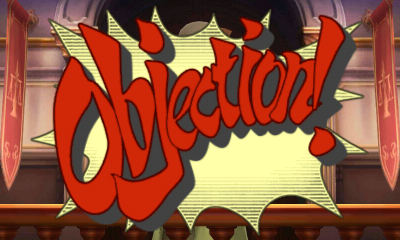
The localization is absolutely phenomenal. As in, the quality of the writing (and the English used) is quite above the usual translation, let alone fan project. It is the most rich amongst the translated AA games, comparable to AAI2’s localization. Their biggest accomplishment was most certainly how they managed to highlight the individuality of each and every character, all with their own quirks, and their loyalty to the setting.

It is quite sad that to see that fans have to pick up the slack for these wonderful games that Capcom doesn’t seem to be interested in bringing over to the West, but it’s difficult to think of a better localization effort. I wonder if perhaps this game hasn’t been considered for an official localization because of its discriminatory nature (and thus, negative portrayal of the British), Capcom fearing negative reception in the West. But at this point in time, that’s nothing but mere conjecture.
I do not exactly urge fans to read this, as it’s pretty much a middle of the pack entry, but fans of the series who are starved for more Ace Attorney should have fun with this one. I have to admit, however, that I am looking forward to GAA2 considering that they already had an entire game to set the foundation for the characters, setting and the story.


